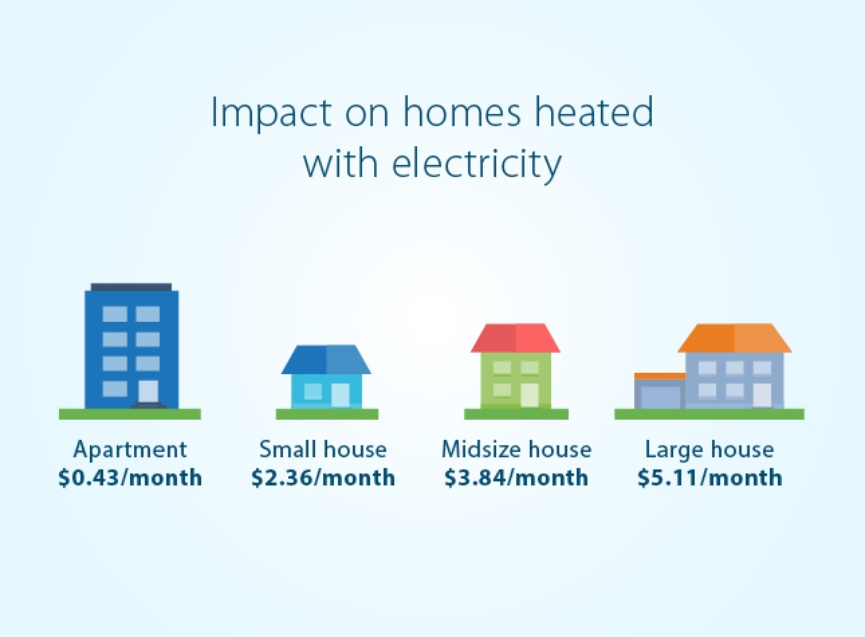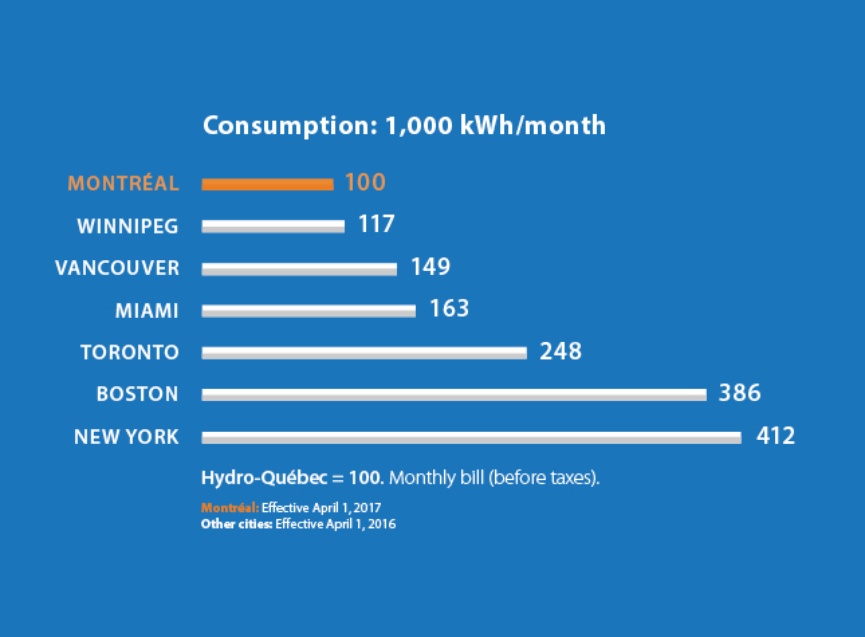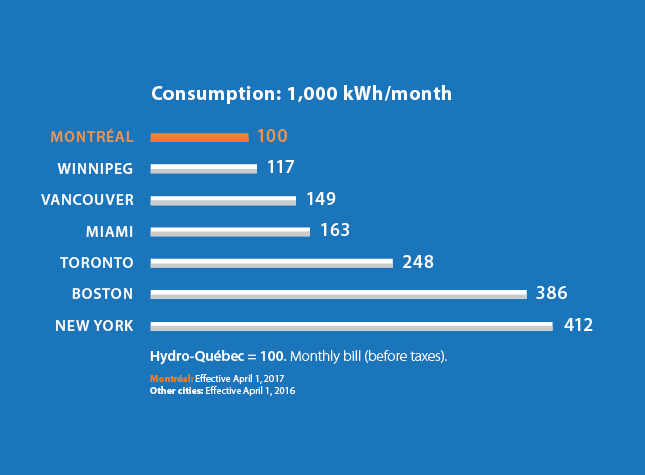July 29, 2016
News
2017–2018 Rate Application
Every summer, Hydro-Québec files a rate adjustment application with the Régie de l’énergie, an independent regulatory body. This application is analyzed according to a rigorous process that includes public hearings in December, during which representatives from all stakeholders can express their views.
In March, when the Régie de l’énergie has completed its analysis, it sets the electricity rates that will go into effect on April 1.
2017–2018 rate application
Hydro-Québec is requesting a rate increase of 1.6%, effective April 1, 2017, for residential customers and most business customers. This increase is mainly due to the capital investment needed to ensure transmission asset sustainment. However, this factor is partly offset by the return to normal temperatures in winter 2015–2016 as well as productivity gains, which limit the requested increase.

Impact on electricity bills
If the Régie approves Hydro-Québec’s application, the monthly impact of the 1.6% rate increase would come to the approximate amounts shown below, depending on the type of home.

Even with this increase, Hydro-Québec’s residential (domestic) rates will still be the lowest in North America.

Hydro-Québec Distribution’s rate application (in French) is available on the Régie de l’énergie’s Web site: www.regie-energie.qc.ca.
Frequently asked questions
Hydro-Québec’s rate applications are based on the expenses it will incur to provide electricity service to all Québec customers the following year and on the revenue it expects to receive from customers when they pay their electricity bills.
Sometimes, this revenue is greater than the anticipated expenses. In that case, the Régie de l’énergie may adjust the rates downwards, as it has already done in the past.
However, if revenue is lower, the Régie may approve a rate increase to cover expenses and restore balance.
The rates are set in such a way as to allow Hydro-Québec to generate the revenue it needs to cover the expenses it will incur to provide electricity service to its customers. There are four major categories of expenses: electricity purchases, power transmission, distribution system operation and maintenance, and customer service.
A small proportion (about 10%) of Hydro-Québec’s profit is generated by Hydro-Québec Distribution. Most of it comes from Hydro-Québec Production, which is responsible for exports.
Consequently, there is no connection between the company’s annual earnings and the rate application filed with the Régie de l’énergie. It should also be noted that the annual dividend paid by Hydro-Québec to the Québec government, which represents 75% of the company’s net income, is used to finance public services, thus benefiting all Quebecers. In 2015, Hydro-Québec paid out a dividend of $2.4 billion to the Québec government.
Hydro-Québec’s residential rates will still be the lowest in North America.

Electricity rates reflect the revenue required to cover the expenses that Hydro-Québec will incur to provide electricity service to its customers the following year. In 2011 and 2012, rates went down. In 2013, 2014 and 2015, the Régie de l’énergie authorized rate increases.
The heritage pool consists of a maximum of 165 terawatthours of electricity that Hydro-Québec Production sells to Hydro-Québec Distribution at a low price each year. It meets about 90% of Quebecers’ needs.
The price of the heritage pool has been pegged to the Consumer Price Index (CPI) since 2014, as provided for by the Act respecting the Régie de l’énergie.
The increase will be the same for all residential customers and most business customers. However, since by law the indexing of the heritage pool does not apply to large-power industrial (Rate L) customers, the increase requested for them is 1.1%.
Any power bought at a price higher than the mean supply cost of about 3¢ per kilowatthour puts upward pressure on electricity rates. For instance, the mean cost of wind power is 10¢ per kilowatthour. This power is integrated into the grid pursuant to orders-in-council adopted by the Québec government, essentially for regional development reasons that Hydro-Québec respects.
By maintaining tight control over costs, Hydro-Québec is able to partially absorb the pressure of inflation and the natural growth in its business in response to Quebecers’ needs.
This year, a decrease in distribution costs, thanks in part to productivity gains of $81 million achieved through the rollout of next-generation meters, has partly offset some of the additional costs, thus limiting the rate increase requested.
Without the $432 million in efficiency gains achieved by Hydro-Québec Distribution over the past 10 years, rates would be about 4% higher in 2017–2018.
Hydro-Québec Distribution will maintain its programs for low-income customers and has earmarked $30 million for this purpose in its 2017–2018 rate application. These programs are mainly designed to support payment of the bills and arrears of customers who have negotiated personalized arrangements. Among other things, a help centre has been set up to serve as the single point of access for bill collection and energy efficiency for low-income customers.
In addition, Hydro-Québec Distribution plans to allocate nearly $10 million to energy efficiency programs tailored to these customers.
We would like to remind everyone that customers having trouble paying their electricity bills should contact Hydro-Québec to set up a payment arrangement.
Electricity rates must cover the expenses Hydro-Québec will incur to provide electricity service to its customers. Even with the proposed increase, our residential rates will still be the lowest in North America.
It should also be noted that the annual dividend paid by Hydro-Québec to the Québec government, which comes directly from the company’s earnings, is used to finance public services, thus benefiting all Quebecers. In 2015, Hydro-Québec paid out a dividend of $2.4 billion to the Québec government.
A small proportion (about 10%) of Hydro-Québec’s profit is generated by Hydro-Québec Distribution. Most of it comes from Hydro-Québec Production, which is responsible for exports.
Hydro-Québec does not sell power more cheaply to outside markets. When we deliver large amounts of high-voltage power to a single location, the cost is lower than when we deliver the same amount at low voltage to tens of thousands of households. It’s the same as for most consumer products: the difference between wholesale and retail prices is due to economies of scale.
In our case, the power we export is transmitted to US wholesale markets over our high-voltage grid. In the U.S., this power is purchased by local distributors, who deliver it in turn to their American customers. It stands to reason that these distributors resell our power to their customers at a higher price.